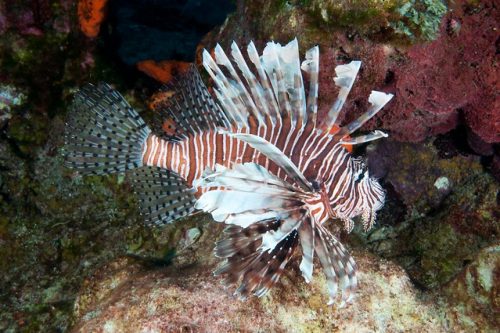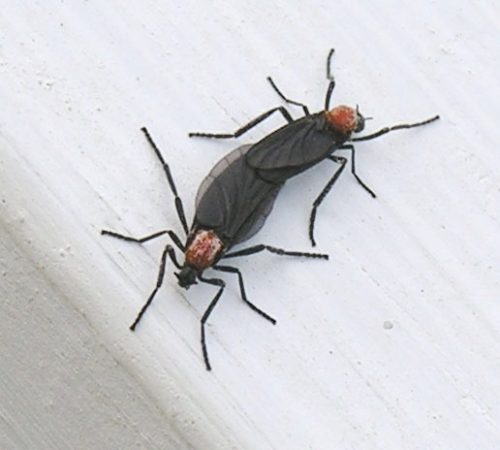Florida is home to nearly 700 vertebrate and more than 30,000 invertebrate animal species. At the same time, 21.3 million people take up residence and 100 million tourists visit the state each year, making human-animal interaction inevitable.
Sometimes, these interactions make headlines. Here are four Florida animals who have made the news this month.
Sea Turtles
Sea turtle nesting season has begun in the Florida Panhandle. Five different species nest in the Panhandle throughout the season, which lasts from May to August.
Loggerheads, green turtles and leatherbacks regularly nest along Florida coastlines, with hawksbills and Kemp’s Ridley nesting less frequently. All five species are considered endangered or threatened under the Federal Endangered Species Act and Florida’s Marine Turtle Protection Act. The loggerhead is the most frequent visitor to Florida’s beaches. In fact, Florida is home to one of the largest aggregations of loggerhead nests in the world, according to the Florida Fish and Wildlife Conservation Commission.
Some of the biggest threats to the turtles include predation, accidental capture in shrimp and fishing nets, limited nesting areas or destruction of nests due to coastal development and artificial lighting, which can lead hatchlings away from the ocean.
The National Oceanic and Atmospheric Administration offers the following advice to help protect sea turtles:
- Reduce ocean trash by participating in beach clean-ups, reducing plastic use and not releasing balloons.
- Protect turtle habitats by keeping beaches dark at night and not driving on nesting beaches.
- Keep your distance when watching sea turtles (at least 50 yards), don’t disturb the turtles or their nests and do not feed them.
- Watch for sea turtles in the water when boating so you can slow down and steer around them.
- Report marine life in distress to professional responders and scientists.
To see sea turtles in the panhandle, visit one of the state-permitted captive sea turtle facilities.
Florida Grasshopper Sparrow
Wildlife officials plan to release captive-raised Florida grasshopper sparrows in Osceola County to try and rescue the bird from extinction. Fewer than 80 grasshopper sparrows remain in central Florida’s dry prairies, making it the rarest bird in Florida the most endangered bird species in the continental United States.
Habitat loss contributed to the steep decline in the bird’s population. To date, 85% of its natural habitat has been converted to pasture grass to raise cattle.
Officials are releasing the captive-raised birds despite warnings from the Rare Species Conservatory Foundation about the risk of spreading a deadly parasite found in some of the birds. With estimates that the species could go extinct as soon as 2020, that is a risk they are willing to take.
The Florida grasshopper sparrow gets its name from one of its calls that resembles a grasshopper’s buzz. If conservation efforts fail, it would be the first U.S. bird species to go extinct in over three decades.
Lionfish

Wildlife artist Guy Harvey released a new lionfish removal collection to raise awareness about this invasive species in the Atlantic Ocean, Gulf of Mexico and Caribbean Sea. A portion of the proceeds from the collection will benefit the Florida Fish and Wildlife Conservation Commission’s lionfish removal initiatives.
The design features an illustration of the red, brown and white zebra-striped fish with pole spears. The lionfish is an invasive species first reported in Florida waters in 1985, but it wasn’t until the mid-2000s that the population soared.
The lionfish is a predatory species that negatively impacts the population of native fish, can eliminate species that keep reef algae in check and competes for food with native species like grouper and snapper. The FWC encourages people to aid in removal of lionfish to limit their negative effect on native species and habitat.
The lionfish is known for its bold stripe pattern and spiny body. It has 18 venomous spines for self-defense, which should be avoided when handling. While stings from the spines are not fatal to humans, they can cause painful injuries.
According to the FWC, divers should spear or use handheld nets to remove the fish as other methods have been proven ineffective.
For more information on how to identify, report, handle and remove lionfish, visit the FWC website.
Lovebugs

Lovebugs made their unpopular return as the warmer weather brought back their flight season. In Florida, the insects swarm on warm days in May and September.
Lovebugs are actually an invasive species that migrated from Central America. Most people recognize them from their strange flight habits, attaching in pairs to mate.
They can be a pest during mating season, especially to drivers. Lovebugs can impair visibility, cause cars to over heat, and damage paint jobs. They fly in great numbers and are attracted to the fumes and heat emitted from cars.
Drivers should wash off any splatter from lovebugs and their eggs within one day to minimize damage to paint, according to Thomas Fasulo, extension entomologist at the University of Florida Institute of Food and Agricultural Sciences.
But lovebugs aren’t all bad. Outside of mating season, lovebug larvae help break down decomposing plant material and vegetation, redistributing nutrients in the ground to the benefit of other plants.
Lovebug populations only swarm for a few weeks each mating season, only living long enough to mate before laying eggs and dying.